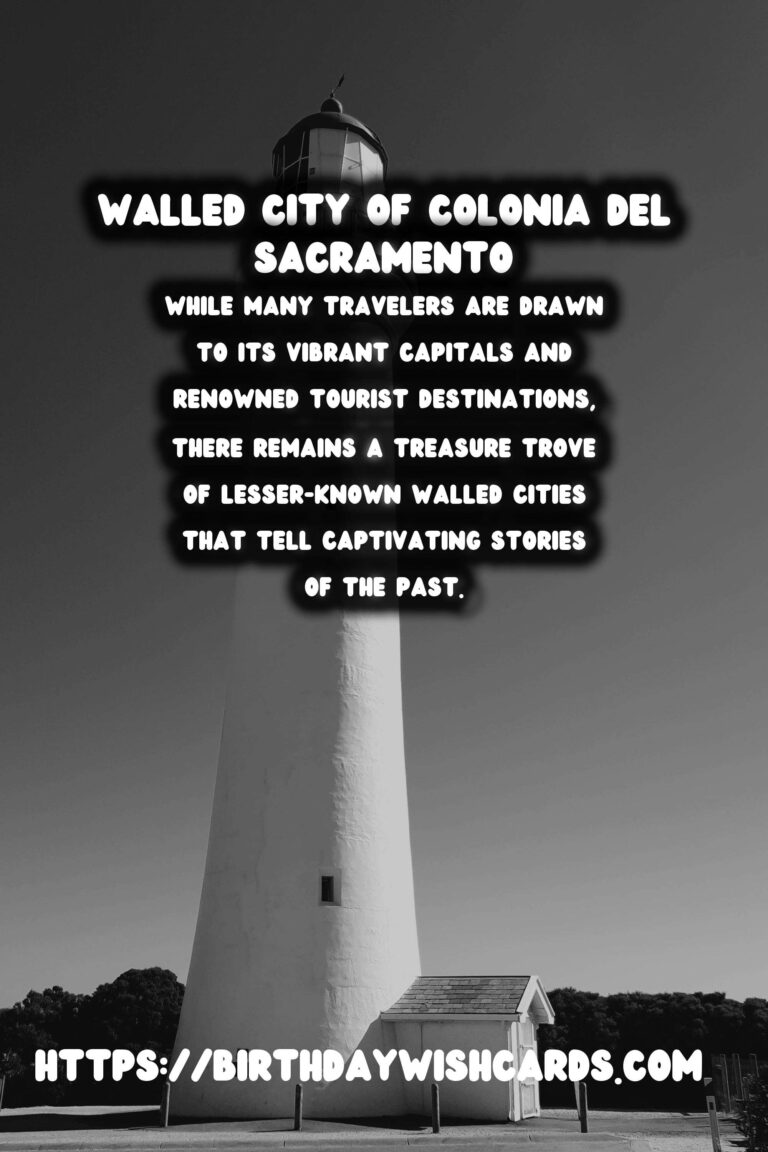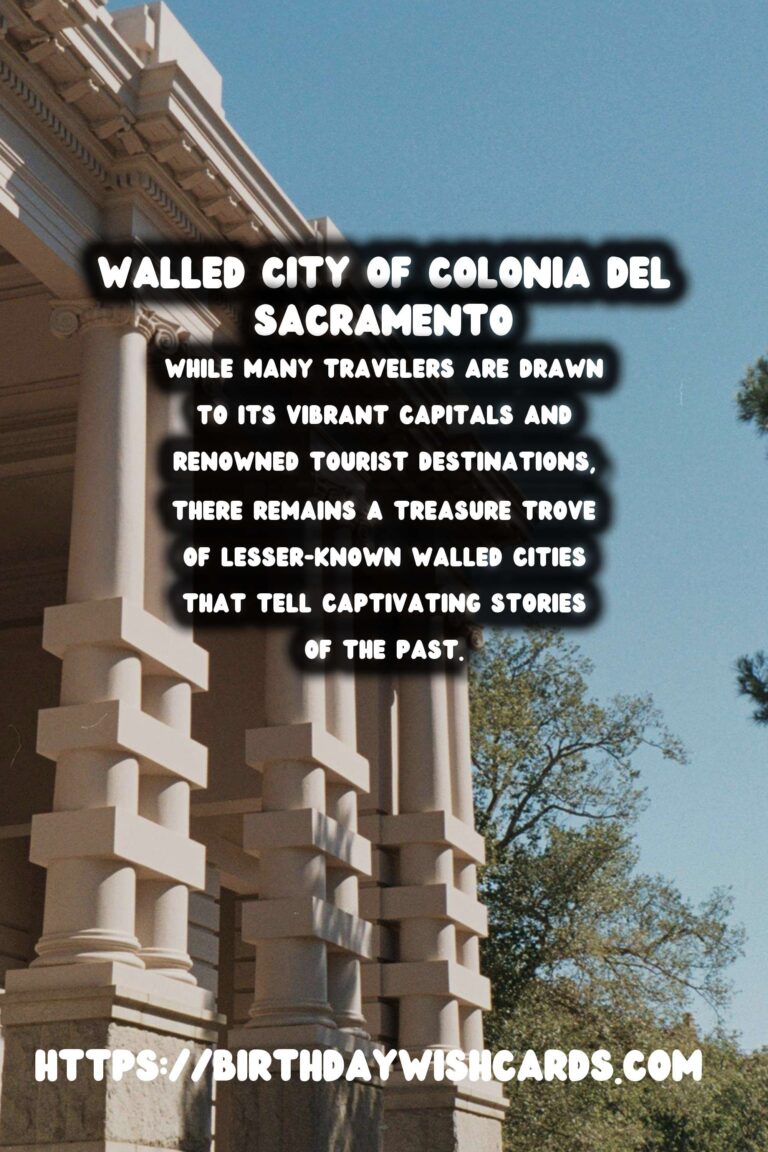
South America is a continent rich with diverse cultures, breathtaking landscapes, and a complex history that has shaped its modern-day nations. While many travelers are drawn to its vibrant capitals and renowned tourist destinations, there remains a treasure trove of lesser-known walled cities that tell captivating stories of the past. These cities, often overshadowed by their more famous counterparts, provide a unique glimpse into the architectural and cultural evolution of the continent. Join us as we uncover some of the hidden walled cities in South America that are waiting to be explored.
The Allure of Walled Cities
Walled cities have historically been symbols of prosperity, strength, and resilience. Serving as fortresses against external threats, these cities were meticulously designed to withstand sieges and protect inhabitants. Beyond their defensive purposes, the walls often encircled bustling centers of commerce, politics, and culture, allowing them to flourish in unique ways. In South America, these remnants of a formidable past continue to intrigue visitors, offering a blend of historic charm and enduring beauty.
Colonia del Sacramento, Uruguay
One of the best-preserved walled cities in South America is Colonia del Sacramento, Uruguay. Founded in 1680 by the Portuguese, this charming city reflects a delightful combination of Spanish and Portuguese colonial influences. The historic quarter, a UNESCO World Heritage site, is encased within the vestiges of ancient walls, offering visitors a walk back in time through its narrow cobblestone streets, quaint plazas, and colorful houses. The city’s iconic drawbridge and the towering Lighthouse overlooking the Rio de la Plata are emblematic of Colonia’s navigational significance and defensive past.
Cartagena, Colombia – The Iconic Yet Mysterious Gem
While Cartagena is widely recognized for its vibrant colors and Caribbean vibes, the full extent of its fascinating history is often understated. Founded on June 1, 1533, by Spanish Commander Pedro de Heredia, Cartagena’s walls were constructed in the late 16th century to protect the city from numerous pirate attacks that plagued its early years. These fortifications envelop what is now known as the Walled City, a UNESCO World Heritage site, where cobblestone streets meet colonial architecture in a unique fusion of history and beauty. Despite its popularity, walking along the ancient walls at sunset offers the city’s still undiscovered stories and secrets to all who venture there.
Santa Marta, Colombia – A Hidden Historical Treasure
Not far from Cartagena lies Santa Marta, another Colombian city that quietly whispers tales of its glorious past. Known primarily for its natural wonders and proximity to the Sierra Nevada de Santa Marta mountain range, the city’s historic center boasts ancient walls often overlooked by tourists. Established in 1525, Santa Marta is the oldest surviving city in Colombia, offering an insight into the country’s colonial journey. Strolling through the streets of Parque de Los Novios and the historic customs house, visitors can immerse themselves in the echoes of an era marked by maritime trade and colonization.
Fortaleza, Brazil – A Fortress with Stories Untold
Fortaleza, in northeastern Brazil, may not feature towering walls like some other cities, yet its fortifications, such as the Fortaleza de Nossa Senhora da Assunção, tell of its strategic significance throughout history. Founded in 1649 by the Dutch, Fortaleza evolved under Portuguese influence after 1665, becoming an essential center for trade and defense. While modernity has transformed the cityscape, remnants of its defensive structures remain part of Fortaleza’s historical narrative, echoing its past role as a fortified trading hub.
Asunción, Paraguay – Exploring the Colonial Heart
The capital city of Paraguay, Asunción, hides fascinating stories behind its modern facade. As one of the oldest cities in South America, established in 1537, Asunción was originally a fortified settlement. While the walls are no longer standing, the colonial heart of the city retains its historic allure with its well-preserved architecture and vibrant cultural scene. The city’s historic districts, particularly Calle Palma, allows visitors to explore Asunción’s colonial roots and the impact of the Guarani-Spanish interaction that defined its formative years.
Conclusion
The lesser-known walled cities of South America are rich tapestries of history, culture, and resilience. Each city, with its unique story, invites exploration beyond the typical tourist itineraries, offering travelers a chance to connect deeper with the continent’s multifaceted past. Whether exploring Colonia del Sacramento’s cobbled streets, gazing over Cartagena’s Caribbean vistas, or discovering Asunción’s colonial secrets, these hidden gems stand as enduring reminders of South America’s enduring heritage.
South America is a continent rich with diverse cultures, breathtaking landscapes, and a complex history that has shaped its modern-day nations. While many travelers are drawn to its vibrant capitals and renowned tourist destinations, there remains a treasure trove of lesser-known walled cities that tell captivating stories of the past.
#WalledCities #SouthAmericaHistory

